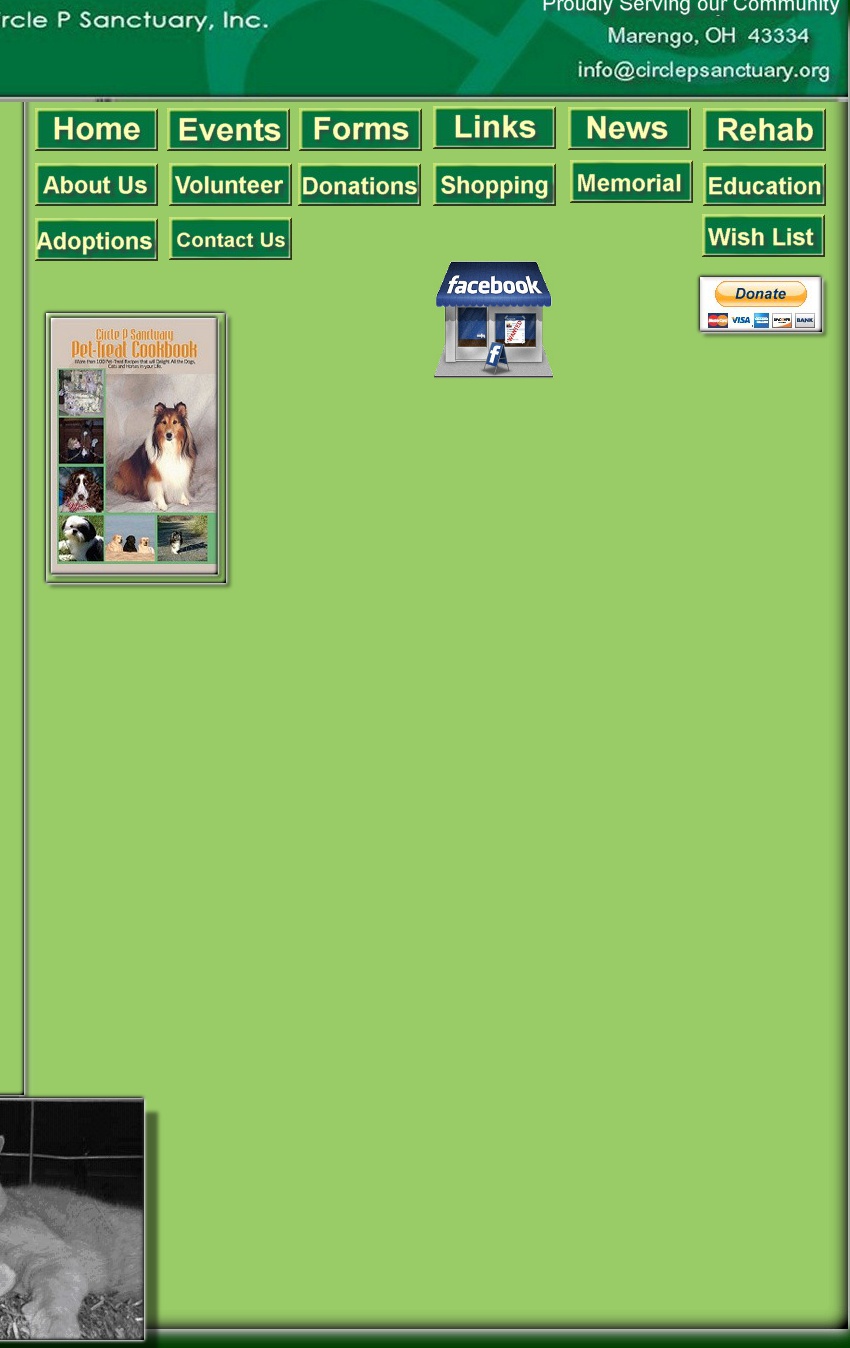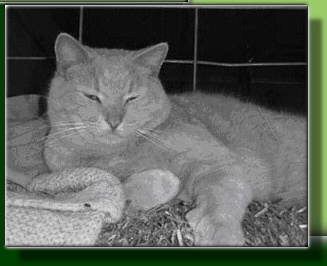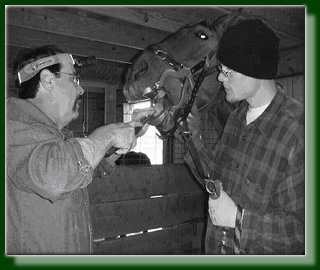


Form Object





Order your copies
of our brand new
all-natural,
pet-treat
cookbook today!
Click Here!
We have written several helpful articles that we
hope you enjoy! Please watch this page for
more and more articles in the weeks and
months to come.
Cat Explosion
Is Dental Care Really necessary?
Five Acres and a Horse
more and more articles in the weeks and
months to come.
Cat Explosion
Is Dental Care Really necessary?
Five Acres and a Horse
Cat Explosion:
Controlling Cat Overpopulation
by Lynne Petitti
When the Circle P Sanctuary, Inc. applied for Recognition of Exemption under Section 501©(3) of the Internal Revenue Code, we needed to state our Mission. We claimed three as follows:
1. Provide safe, clean and comfortable temporary to permanent shelter for unwanted, lost, abandoned, stray or abused animals, and to place animals for adoption with caring individuals and families;
2. Educate the community on the importance of spaying/neutering all animals as it relates to overpopulation and animal health, and on other issues relating to the humane treatment of
animals; and
3. Work with humane societies and other animal shelters toward furthering the common goal of humane treatment of all animals.
The Circle P Sanctuary, Inc. has been able to create an environment that is conducive to concentrating our efforts helping larger animals such as horses. However, we join other local organizations with the overwhelming task of trying to educate our communities about the "Cat Explosion" we are encountering. I have spoken with representatives from HOPE (Heart of Ohio PEts) which works directly to help solve the overpopulation of cats by offering low cost
spay/neuter programs, as well as the opportunity to adopt/foster cats already rescued and in need of care. They also work with other humane societies to assist in controlling feral cat populations.
Controlling Cat Overpopulation
by Lynne Petitti
When the Circle P Sanctuary, Inc. applied for Recognition of Exemption under Section 501©(3) of the Internal Revenue Code, we needed to state our Mission. We claimed three as follows:
1. Provide safe, clean and comfortable temporary to permanent shelter for unwanted, lost, abandoned, stray or abused animals, and to place animals for adoption with caring individuals and families;
2. Educate the community on the importance of spaying/neutering all animals as it relates to overpopulation and animal health, and on other issues relating to the humane treatment of
animals; and
3. Work with humane societies and other animal shelters toward furthering the common goal of humane treatment of all animals.
The Circle P Sanctuary, Inc. has been able to create an environment that is conducive to concentrating our efforts helping larger animals such as horses. However, we join other local organizations with the overwhelming task of trying to educate our communities about the "Cat Explosion" we are encountering. I have spoken with representatives from HOPE (Heart of Ohio PEts) which works directly to help solve the overpopulation of cats by offering low cost
spay/neuter programs, as well as the opportunity to adopt/foster cats already rescued and in need of care. They also work with other humane societies to assist in controlling feral cat populations.
I would like to share a few facts I have learned from speaking with HOPE and research compiled by Barb
Jones, DVM for the Sacramento Area Animal Coalition; A female cat may become pregnant as
soon as she reaches sexual maturity which is typically when they weigh between four and a half to seven pounds, or between four to nine months old. Free-roaming cats may become sexually mature sooner than house cats. The gestation period for a pregnant cat averages about 65 days. Each litter may be three to six kittens, and it is possible for the mother cat to become pregnant again as soon as one to five weeks after delivery if not protected from intact male cats. Free-roaming cats may have up to five litters in one year. There is no age limit for a female cat to become pregnant. There is no benefit to letting your house cat have a litter before spaying. It will only add to the unwanted population that plagues our communities now. It is possible to spay a cat that is pregnant (it can be a little more difficult procedure, but better to curb the unwanted offspring). A cat may be spayed while nursing a litter if it is not possible to keep her safe from possible exposure to intact males. She will still be able to produce enough milk for her kittens. However, if it is possible to protect the mother from being bred, it is better to wait until the kittens have been weaned. Litter mates who are housed together must be spayed/neutered by the age of four months before they begin to reproduce themselves. Spaying a cat before her first litter or before her first "heat" is easier and safer for the cat.
According to the Humane Society of the United States, in seven years, one female cat and her offspring can theoretically produce 420,000 cats. We can all do our part to control cat population by spaying and neutering our own cats or adopt/foster a cat from a rescue. Ohio Law states, if you feed a stray cat for three days or more, it is no longer a stray. It's yours! Please consider donating
to your local Humane Society or HOPE to specifically contribute to their efforts to offer help, rescue and care for these animals in need. To contact Heart of Ohio Pets phone 740-625-5607 or mail donations to P.O. Box 242, Centerburg, OH 43011.
Is Dental Care Really Necessary For Horses?
Article written by Lynne Petitti
Absolutely! I didn't know how much until I had the
opportunity to watch and learn from our dental
technician, Darel Webb. I had always planned on
trying to have the horses' dental work done each
year, but I almost thought of it as a luxury (because
of the funding). Boy was I wrong! It is an
absolute necessity.
Darel was an awesome teacher, allowing me to look
and feel inside of the horses' mouths. I was amazed
what I learned. Some of the horses had "hooks"
which are really sharp points that need to be filed
down or it will create lacerations on the cheeks and
tongue. Some had "roller coaster" shaped wear,
which means the horse cannot properly chew their
food allowing them to get all of the nutrients. As a
result, the horse may be a messy eater, dropping grain creating waste for the horse and your pocketbook. If left unattended, it is not uncommon for these horses to lose weight and as a result good body condition. The technique to correct these abnormalities is called "Floating", which levels all of the high/low and sharp points of the teeth so the horse can chew in a side to side motion of grinding. Additional symptoms of dental problems may be pieces of grain or hay visibly seen in the manure, head tilting, excessive chewing or fighting on the bit, and resisting the act of putting the bridle on the horse. A foul odor from the mouth or nostrils, nasal discharge or swelling of the face, jaw or mouth tissue should be checked by a trained dental technician. Finally, if a horse exhibits poor performance such as lugging on the bridle, failing to turn or stop, even bucking could be related to a dental problem. A few of the horses had "wolf teeth", which is a pointy little tooth that grows in the bit area of the mouth. These are kind of like human wisdom teeth. There can be up to four, but like humans not all horses may have any. Typically, evidence of wolf teeth will be present after the ages of five to six months old. Before a horse begins training under saddle and with a bit, they should definitely be checked for wolf teeth. You may think the horse is behaving badly, but it could actually be a reaction to pain in his/her mouth. It is possible to guesstimate the age of a horse based on the condition and shape of their teeth. A horse will lose its first baby tooth at the age of two and a half years old. Ultimately, horses shed 24 baby teeth and get all of their permanent teeth by the age of four and a half years old. As a general rule, an annual dental exam should be conducted until the age of 18 years old. At that age, teeth will begin to show more extensive wear and tear, and dental visits should increase to every six months.
soon as she reaches sexual maturity which is typically when they weigh between four and a half to seven pounds, or between four to nine months old. Free-roaming cats may become sexually mature sooner than house cats. The gestation period for a pregnant cat averages about 65 days. Each litter may be three to six kittens, and it is possible for the mother cat to become pregnant again as soon as one to five weeks after delivery if not protected from intact male cats. Free-roaming cats may have up to five litters in one year. There is no age limit for a female cat to become pregnant. There is no benefit to letting your house cat have a litter before spaying. It will only add to the unwanted population that plagues our communities now. It is possible to spay a cat that is pregnant (it can be a little more difficult procedure, but better to curb the unwanted offspring). A cat may be spayed while nursing a litter if it is not possible to keep her safe from possible exposure to intact males. She will still be able to produce enough milk for her kittens. However, if it is possible to protect the mother from being bred, it is better to wait until the kittens have been weaned. Litter mates who are housed together must be spayed/neutered by the age of four months before they begin to reproduce themselves. Spaying a cat before her first litter or before her first "heat" is easier and safer for the cat.
According to the Humane Society of the United States, in seven years, one female cat and her offspring can theoretically produce 420,000 cats. We can all do our part to control cat population by spaying and neutering our own cats or adopt/foster a cat from a rescue. Ohio Law states, if you feed a stray cat for three days or more, it is no longer a stray. It's yours! Please consider donating
to your local Humane Society or HOPE to specifically contribute to their efforts to offer help, rescue and care for these animals in need. To contact Heart of Ohio Pets phone 740-625-5607 or mail donations to P.O. Box 242, Centerburg, OH 43011.
Is Dental Care Really Necessary For Horses?
Article written by Lynne Petitti
Absolutely! I didn't know how much until I had the
opportunity to watch and learn from our dental
technician, Darel Webb. I had always planned on
trying to have the horses' dental work done each
year, but I almost thought of it as a luxury (because
of the funding). Boy was I wrong! It is an
absolute necessity.
Darel was an awesome teacher, allowing me to look
and feel inside of the horses' mouths. I was amazed
what I learned. Some of the horses had "hooks"
which are really sharp points that need to be filed
down or it will create lacerations on the cheeks and
tongue. Some had "roller coaster" shaped wear,
which means the horse cannot properly chew their
food allowing them to get all of the nutrients. As a
result, the horse may be a messy eater, dropping grain creating waste for the horse and your pocketbook. If left unattended, it is not uncommon for these horses to lose weight and as a result good body condition. The technique to correct these abnormalities is called "Floating", which levels all of the high/low and sharp points of the teeth so the horse can chew in a side to side motion of grinding. Additional symptoms of dental problems may be pieces of grain or hay visibly seen in the manure, head tilting, excessive chewing or fighting on the bit, and resisting the act of putting the bridle on the horse. A foul odor from the mouth or nostrils, nasal discharge or swelling of the face, jaw or mouth tissue should be checked by a trained dental technician. Finally, if a horse exhibits poor performance such as lugging on the bridle, failing to turn or stop, even bucking could be related to a dental problem. A few of the horses had "wolf teeth", which is a pointy little tooth that grows in the bit area of the mouth. These are kind of like human wisdom teeth. There can be up to four, but like humans not all horses may have any. Typically, evidence of wolf teeth will be present after the ages of five to six months old. Before a horse begins training under saddle and with a bit, they should definitely be checked for wolf teeth. You may think the horse is behaving badly, but it could actually be a reaction to pain in his/her mouth. It is possible to guesstimate the age of a horse based on the condition and shape of their teeth. A horse will lose its first baby tooth at the age of two and a half years old. Ultimately, horses shed 24 baby teeth and get all of their permanent teeth by the age of four and a half years old. As a general rule, an annual dental exam should be conducted until the age of 18 years old. At that age, teeth will begin to show more extensive wear and tear, and dental visits should increase to every six months.
"Five acres and a horse" The dream… and the reality
Authored By: Garth Baker, Nancy Collander, Lynne Petitti & Jennifer Petitti
Congratulations on considering the joys of horse ownership - for lots of people, owning a horse is a lifelong dream! The rewards are many: rides through open summer fields and down crunchy, colorful fall trails, looking out your window and seeing your horse munching contentedly in the pasture, and the simple companionship that only a horse can provide. This is a six page long article and worth the read! To read the rest of this wonderful article, you can download the pdf of it by clicking here!
Authored By: Garth Baker, Nancy Collander, Lynne Petitti & Jennifer Petitti
Congratulations on considering the joys of horse ownership - for lots of people, owning a horse is a lifelong dream! The rewards are many: rides through open summer fields and down crunchy, colorful fall trails, looking out your window and seeing your horse munching contentedly in the pasture, and the simple companionship that only a horse can provide. This is a six page long article and worth the read! To read the rest of this wonderful article, you can download the pdf of it by clicking here!
home / donations / events / adoptions / wish list / contact us
/ about us / education / newsletter / volunteer
Copyright (C) Circle P Sanctuary
/ about us / education / newsletter / volunteer
Copyright (C) Circle P Sanctuary
Click our Facebook Icon to
Like and follow us today!!























